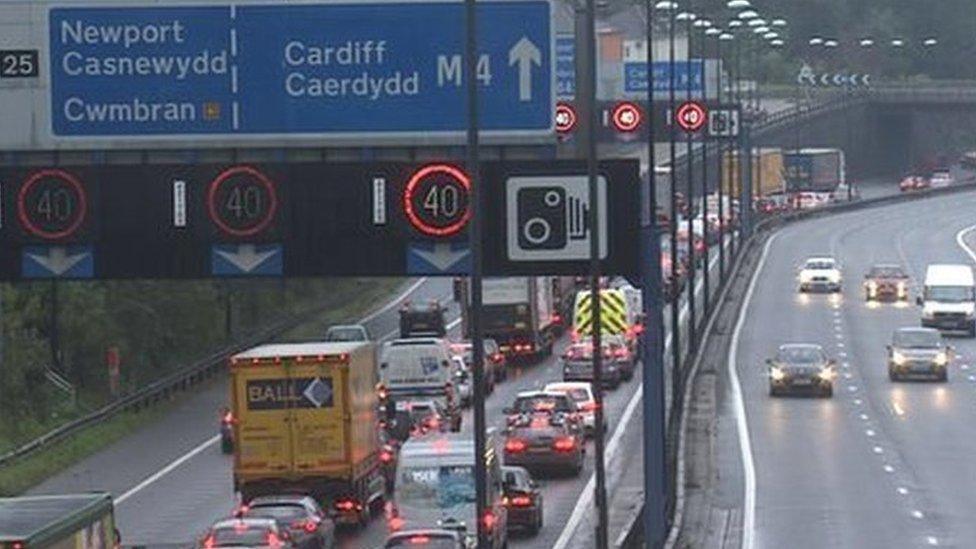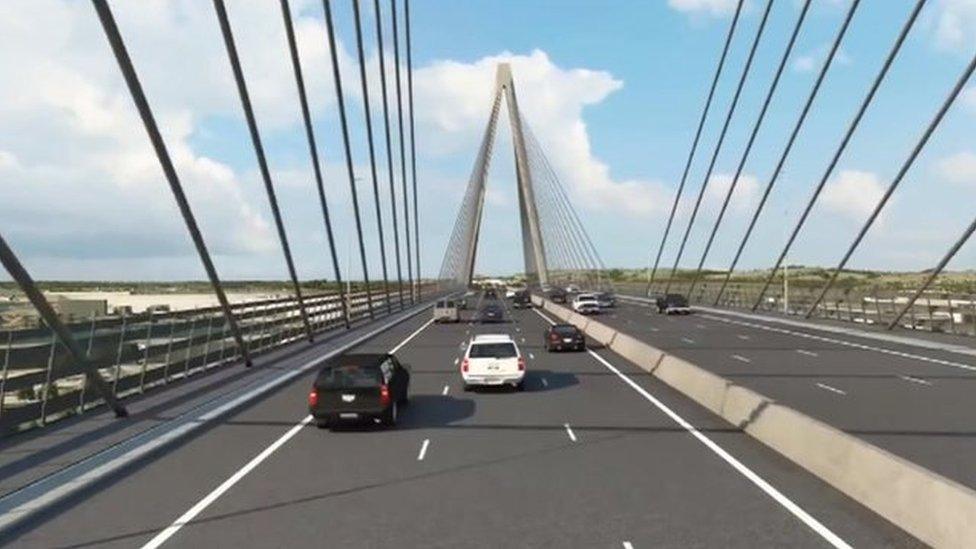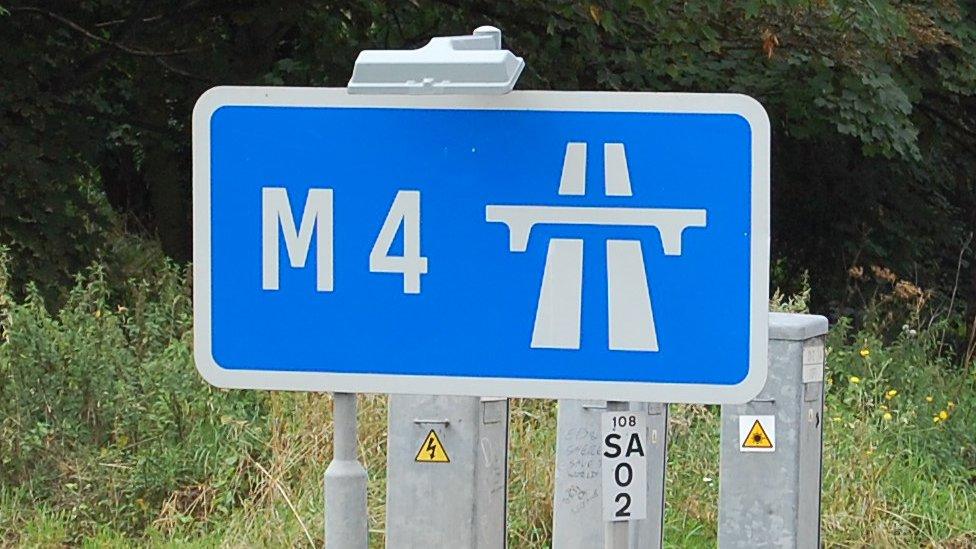Tunnel proposal for £1bn M4 relief road around Newport
- Published

The Welsh government has backed a six-lane motorway to run south of Newport
A public inquiry into the planned £1.1bn M4 relief road to the south of Newport is to hear a proposal to put the new route underground in a tunnel.
Inspector Bill Wadrup told the first day of the inquiry he would hear up to 22 possible alternatives to the Welsh Government's chosen route.
It wants a six-lane motorway to relieve congestion on the current M4 between Magor and Castleton.
Mr Wadrup said one plan included "sinking the motorway".
Mr Wadrup said the tunnel proposal would be "something similar" to the Channel Tunnel in scale and would make it one of the longest road tunnels in the world.
The Laerdal Tunnel in Norway is the longest in the world at 15.23 miles (24km) and the planned M4 relief road around Newport is to be 15 miles.
The inquiry is due to last five months and will examine the plan and alternatives as the Welsh Government wants to relieve congestion on the current M4 around the Brynglas tunnels.
This video reveals the possible route of the M4 relief road
It hopes construction of the road, first proposed in 1991, will start in 2018 and open in 2021.
Mr Wadrup opened the inquiry by outlining arguments from supporters of the new route, which ranged from boosting the Welsh economy to helping holiday resorts in west Wales.
The independent inspector also highlighted objections, ranging from damage to the natural environment to the cost.
Welsh Government-appointed barrister Morag Ellis QC said, in her opening submissions, that the new route was "essential to the wellbeing of the people of Wales" as the current M4 was "not fit for purpose".
She said congestion happened with "monotonous regularity" with "frequent and unpredictable incidents" meaning the current route was "neither a reliable or resilient network" and that "problems will get worse".
The Welsh Government has said the current M4 to the north of Newport, opened in 1967, was originally designed as a city bypass and "does not meet modern motorway design standards".
Latest traffic data from the Department of Transport showed that up to 115,000 vehicles travel along Wales' busiest stretch of road each day.
The Welsh Government has said it has a higher than average accident rate.

Objectors to the M4 relief road protest before the start of the public inquiry
The Welsh Government admitted "more than 100 route options" have been assessed, including alternative modes of transport and upgrading sections of the current M4, before proposing a new stretch of motorway.
Matthew Jones, the Welsh Government's civic engineer, told the inquiry the economic benefits exceed the cost, insisting the project will bring £1.62bn direct benefit to Wales.
He insists improved public transport, like the proposed £600m South Wales Metro, "could not alone sufficiently address the traffic problems around Newport".
Environmental groups, local residents and opposition politicians are among the many opponents as the proposed route cuts across the ancient marshlands of the Gwent Levels and four sites of special scientific interest.
About 120 objectors from the Campaign Against the Levels Motorway, external staged a silent protest before the inquiry.
Mr Jones said the Welsh Government had listened to environmental concerns and had altered the proposed route to limit the impact on the areas of special scientific interest on the Gwent Levels.
He told the inquiry that the Welsh Government had also opted for a cable-stayed bridge over the River Usk to ensure "fish migration and impact on the local otter population" were not affected.
There have been 335 formal objections, compared to 192 letters of support, from bodies including the RSPB, Natural Resources Wales and the owners of Newport docks.
- Published27 February 2017

- Published22 February 2017

- Published27 January 2017

- Published14 December 2016

- Published3 October 2016
